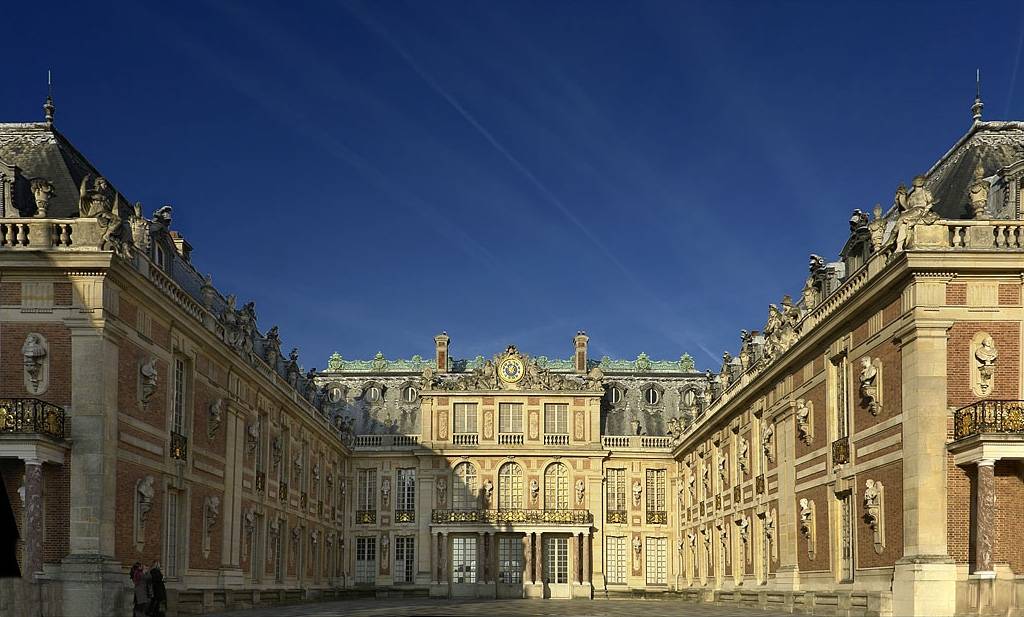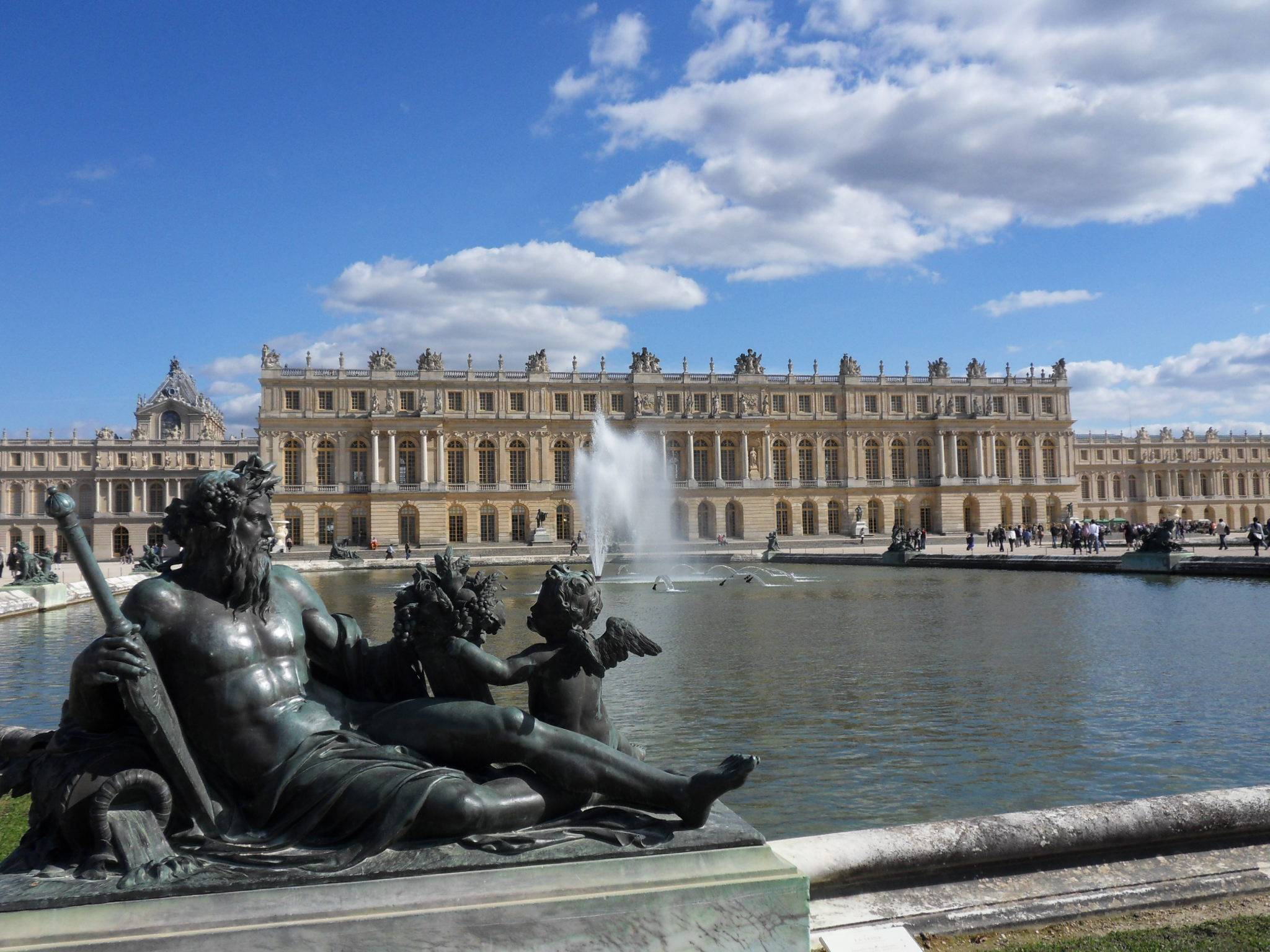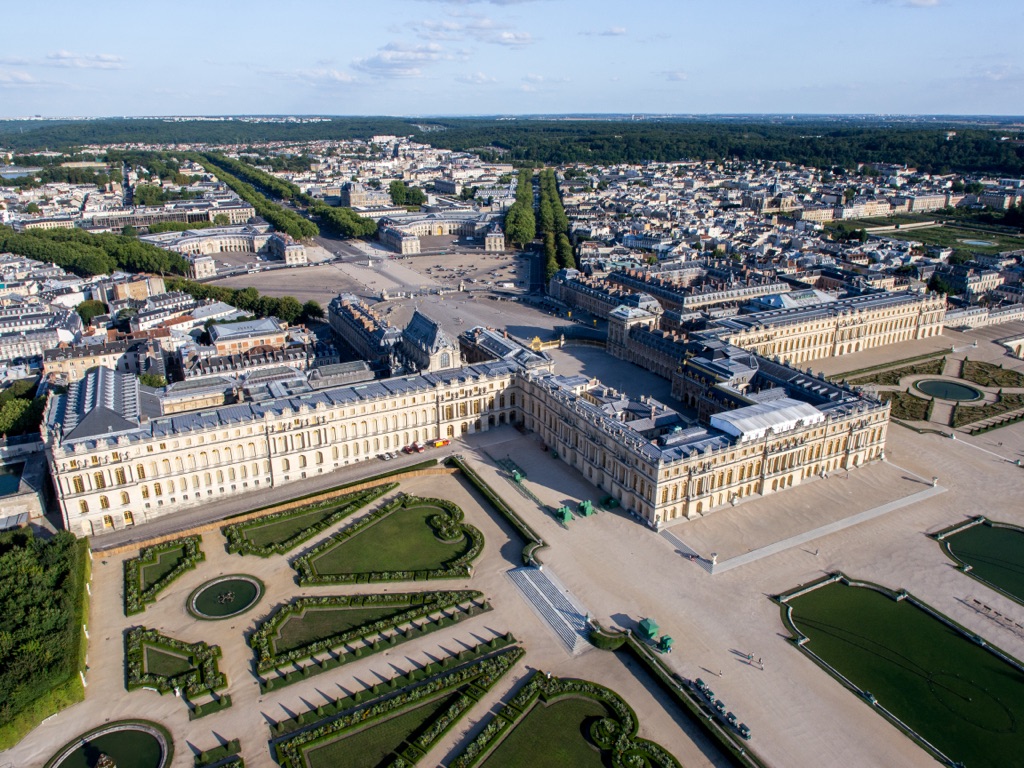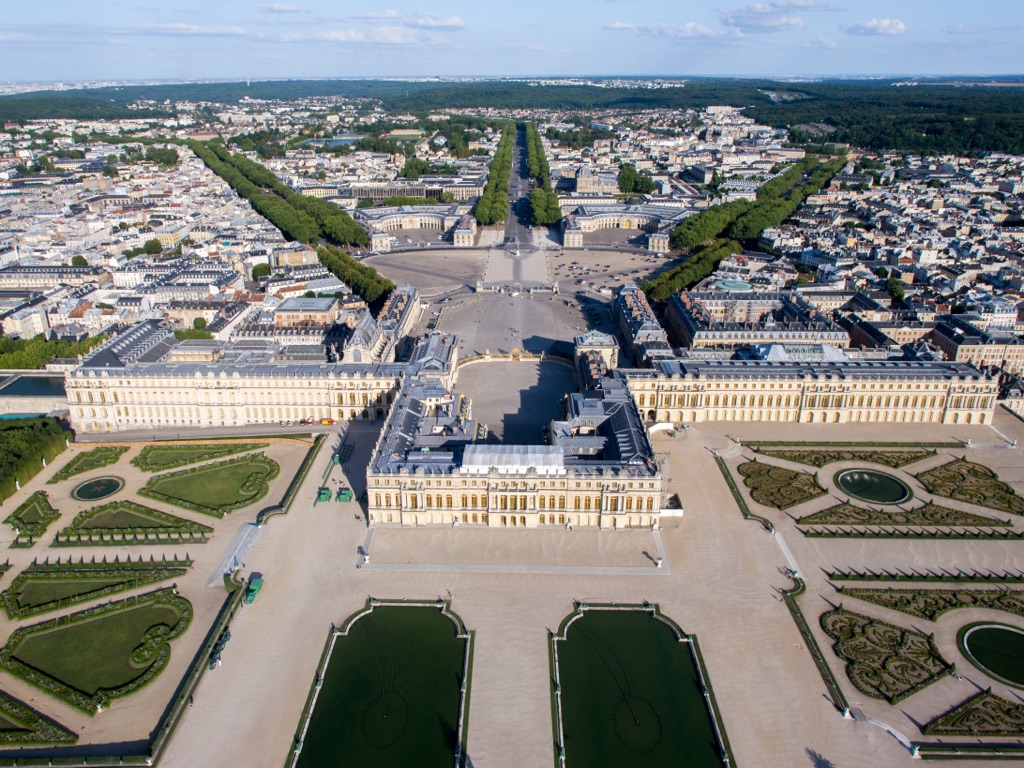The Palace of Versailles, a symbol of royal absolutism and the embodiment of classical French art, stands as a testament to the grandeur of the French monarchy. Originally a hunting lodge for King Louis XIII, it was transformed by his son, Louis XIV, into a magnificent palace that served as the seat of France’s government for over a century. The palace is renowned for its opulent architecture, beautiful gardens, and the Hall of Mirrors, where the Treaty of Versailles was signed in 1919, ending World War I. Today, it is a UNESCO World Heritage site, attracting millions of visitors from around the globe.
Get your dose of History via Email
Historical Background of Palace of Versailles
King Louis XIII first built a hunting lodge at Versailles in 1624. His son, Louis XIV, expanded the site into one of the largest palaces in the world. The transformation began in 1661, with Louis XIV wanting to establish his absolute power and move away from Paris. Architect Louis Le Vau, landscape architect André Le Nôtre, and painter-decorator Charles Le Brun formed the team that executed Louis XIV’s vision. The palace became the official royal residence in 1682 and remained so until the French Revolution in 1789.
Throughout the 18th century, subsequent monarchs, including Louis XV and Louis XVI, made further enhancements. Marie Antoinette, Louis XVI’s queen, had a distinct influence on Versailles, adding a touch of intimacy to the grandiose estate. The palace was not only a royal residence but also a center of political power. In 1789, the French Revolution forced the royal family to leave Versailles for Paris. The palace then entered a period of neglect until the 19th century when it was transformed into a museum of the history of France under the orders of Louis-Philippe.

Historically, the Palace of Versailles has been the scene of several key events. The most notable is the signing of the Treaty of Versailles in the Hall of Mirrors, which formally ended World War I. This event marked a pivotal moment in world history, reshaping national boundaries and setting the stage for the 20th century. The palace’s history reflects the evolution of French society and politics, from the age of absolutism to the modern era.
Over the years, Versailles has been restored and preserved, allowing visitors to experience its former glory. The French government has undertaken numerous restoration projects to maintain the palace and its gardens. These efforts ensure that the Palace of Versailles continues to be a symbol of France’s cultural heritage and an important historical site.
The Palace of Versailles has been inhabited by several generations of French royalty. After the Revolution, it ceased to be a royal residence. However, it has maintained its status as an iconic landmark, representing the opulence and power of the French monarchy. Its history is a rich tapestry of artistic achievement, political intrigue, and a testament to the changing tides of French society.
About Palace of Versailles
The Palace of Versailles is an architectural masterpiece, showcasing the pinnacle of French classical architecture. The main palace contains 2,300 rooms spread over 63,154 square meters. The most famous room is the Hall of Mirrors, with its 357 mirrors reflecting the grandeur of the Sun King. The palace’s baroque style is characterized by elaborate ornamentation, classical columns, and grand facades.

The materials used in the construction of Versailles were luxurious and meant to display the wealth of the French monarchy. Marble, gold leaf, and rich fabrics adorned the interiors, while the exteriors were made of stone with intricate sculptures and reliefs. The palace’s construction was a monumental task that required the labor of thousands of workers, including some of the most skilled artisans of the time.
Architectural highlights include the King’s Grand Apartment, the Queen’s Grand Apartment, and the Chapel of Versailles. Each of these spaces is designed with meticulous attention to detail and grandeur. The King’s Grand Apartment, for example, consists of a series of salons each dedicated to a different Roman god and symbolizing Louis XIV’s power.
The gardens of Versailles are as impressive as the palace itself. André Le Nôtre designed the gardens to illustrate the control of nature, with perfectly manicured lawns, geometric patterns, and grand fountains. The gardens span across 800 hectares and include 200,000 trees, 50 fountains, and a 1.6-kilometer-long Grand Canal.
The construction of the Palace of Versailles was a feat of engineering and artistic prowess. It required innovative techniques for the time, including the use of machines to transport large amounts of earth and water needed for the gardens. The palace and its gardens are a harmonious blend of art and nature, designed to impress and embody the absolute power of the Sun King.
Theories and Interpretations
Several theories and interpretations surround the Palace of Versailles. Some historians view it as a symbol of the absolute power of the monarchy, while others see it as an embodiment of French cultural supremacy. The lavishness of the palace has been interpreted as both a display of wealth and an attempt to control the nobility by keeping them under the king’s watchful eye.

The use of space and design at Versailles is also subject to interpretation. The alignment of the gardens with the sun’s path is seen as a representation of Louis XIV’s nickname, “the Sun King.” The Hall of Mirrors, with its expansive windows and reflective surfaces, has been interpreted as a metaphor for the king’s power to observe and reflect on his kingdom.
Mysteries also abound at Versailles, such as the purpose of certain rooms and the symbolism behind some of the artwork. The palace’s extensive artwork and sculptures often have allegorical meanings, reflecting the political and philosophical ideas of the time. Matching these to historical records has been a challenge for historians and art historians alike.
Dating the various phases of construction and decoration at Versailles has been carried out using historical documents, architectural analysis, and, more recently, scientific methods such as dendrochronology. These efforts have helped to create a timeline of the palace’s development and the changes it underwent over the centuries.
The interpretations of Versailles are numerous, and the palace continues to be a subject of academic study. Its history and symbolism are deeply intertwined with the narrative of France and continue to captivate scholars and visitors alike.
At a glance
Country: France
Civilization: French
Age: Construction began in 1624, expanded in the 1660s, royal residence from 1682 to 1789
Conclusion and Sources
Reputable sources used in the creation of this article include:
- Wikipedia – https://en.wikipedia.org/wiki/Palace_of_Versailles
- The official Palace of Versailles website – https://en.chateauversailles.fr/
- UNESCO World Heritage Centre – https://whc.unesco.org/en/list/83/

